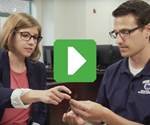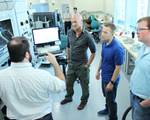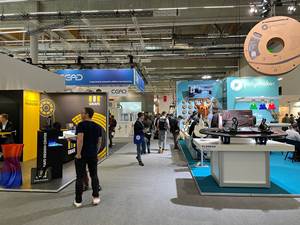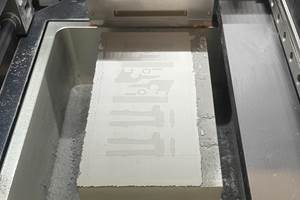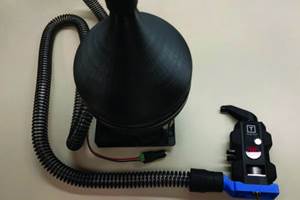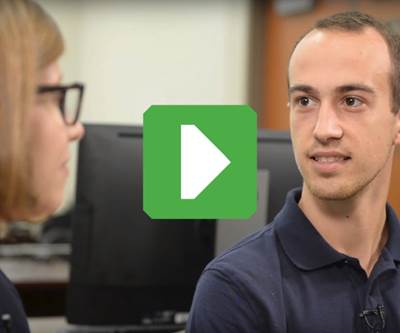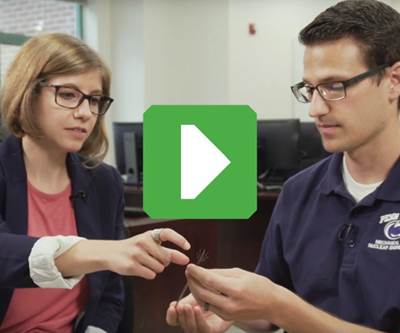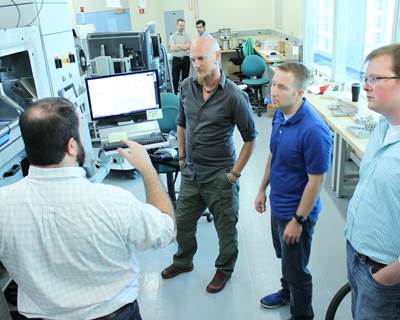Video: Inside the Penn State Additive Manufacturing Master's Program, Part 3
Alan Suarez Garcia, advanced manufacturing engineer at GE Healthcare and master's student at Penn State, explains how this degree program changes how he looks at manufacturing.
Is it possible to offer a well-rounded higher education in additive manufacturing (AM)? With so many technologies, tools and materials, could a graduate be truly prepared for a career in AM?
These questions are a little off the mark when you consider how higher education in AM is playing out at Penn State University (PSU). Students enrolled in the school’s master’s program in AM and design aren’t expected to walk away knowing everything possible about their field. Instead, the degree is a baseline, a foundation in AM fundamentals that can be applied across industry, application, process and machine.
As Alan Suarez Garcia described it to me, the program prepares students to view manufacturing through “an AM lens,” following how it impacts the entire supply chain. Garcia is an online student enrolled in the master’s program while simultaneously working full time as an advanced manufacturing engineer for GE Healthcare. I met up with him at Penn State last August while he was completing the on-campus lab work for this degree. Watch below or read on for the transcript.
Video Transcript
Stephanie Hendrixson, Additive Manufacturing Magazine
I’m Stephanie Hendrixson with Additive Manufacturing Magazine. I'm here at Penn State learning about their master’s program in additive manufacturing and design. This is a multidisciplinary program that spans several different colleges and departments here at Penn State. I'm here with Alan Suarez Garcia, an advanced manufacturing engineer at GE Healthcare and one of the current students in the program. What's the potential of additive manufacturing (AM) in the healthcare industry?
Alan Suarez Garcia, GE Healthcare
GE Healthcare is exploring this technology in many different ways. We want to revolutionize the whole industry. We want to speed up our product introduction cycles, as well as use the technology to tailor a lot of our medical imaging machines to better fit our patients. The better we can provide the images that help save lives, it's going to be a great way to use that technology.
Stephanie
So, it's beneficial internally both for how you're developing your products and then ultimately for the patient at the end of the line?
Alan
Yeah.
Stephanie
What has the experience been like so far as a student in the program?
Alan
It's been great. I've been able to pick up the material pretty quickly and being on campus this week has been a great experience to interact with professors and other students in my class and really get some hands-on experience that I can take back to my job and further develop my additive toolset.
Stephanie
You're a “world campus” student. You've been doing most of your coursework online but you're here this week to do the hands-on portion of the class. So, what is it you're working on and how is that experience going so far?
Alan
The experience has been great. This week really revolves around putting theory to actual hands-on experience. We've been messing around with machines and getting our hands on the machines that we can use to print, and really understanding the whole process of AM, all the way from microstructure to postprocessing of parts that come out of an additive machine.
Stephanie
What will you take away from this experience and bring back to your job at GE Healthcare?
Alan
This whole program allows me to put on the AM lens and really use that to think about if we can make a part using AM, or how you set up a process for AM in a production setting that makes sense for both the business and the product and, in our case, the patients.
Stephanie
Looking at production through an AM lens—there are a lot of different components to that. There's the design aspect, there's the postprocessing aspect. Why is it important to take that broad perspective when you're thinking about manufacturing?
Alan
AM has the potential to shift the paradigm of how we design and make our parts. So, it's important to take that lens and apply it as early as possible in the production cycle.
That's one of the things that we've been learning throughout this program and throughout this week is to make sure that we account for all the considerations that are necessary to make sure that a part can be additively manufactured. Materials, the machine, support structures and the financial aspects of that as well.
Related Content
A Framework for Qualifying Additively Manufactured Parts
A framework developed by The Barnes Global Advisors illustrates considerations and steps for qualifying additively manufactured parts, using an example familiar to those in AM: the 3D printed bottle opener.
Read More10 Important Developments in Additive Manufacturing Seen at Formnext 2022 (Includes Video)
The leading trade show dedicated to the advance of industrial 3D printing returned to the scale and energy not seen since before the pandemic. More ceramics, fewer supports structures and finding opportunities in wavelengths — these are just some of the AM advances notable at the show this year.
Read MoreAM 101: What Is Binder Jetting? (Includes Video)
Binder jetting requires no support structures, is accurate and repeatable, and is said to eliminate dimensional distortion problems common in some high-heat 3D technologies. Here is a look at how binder jetting works and its benefits for additive manufacturing.
Read MoreNIOSH Publishes 3D Printing Safety Guide for Nonindustrial Settings
NIOSH has published a 3D printing safety guide for small businesses and other additive manufacturing users such as makerspace users, schools, libraries and small businesses.
Read MoreRead Next
Video: Inside the Penn State Additive Manufacturing Master's Program, Part 4
Kevin White, mechanical engineer at the Naval Nuclear Lab and student at Penn State, shares how a higher education in AM provides benefits beyond technical training.
Read MoreVideo: Inside the Penn State Additive Manufacturing Master's Program, Part 2
A conversation with Brad Hanks, Ph.D. student at Penn State University, illustrates the intersection of optimization and AM with the example of an electrode for cancer treatment surgery.
Read MoreInside the Penn State Additive Manufacturing Master’s Program, Part 1
PSU's engineering master's degree in additive manufacturing and design offers students and manufacturing professionals a higher education in a continuously maturing field.
Read More
.jpg;width=70;height=70;mode=crop)

